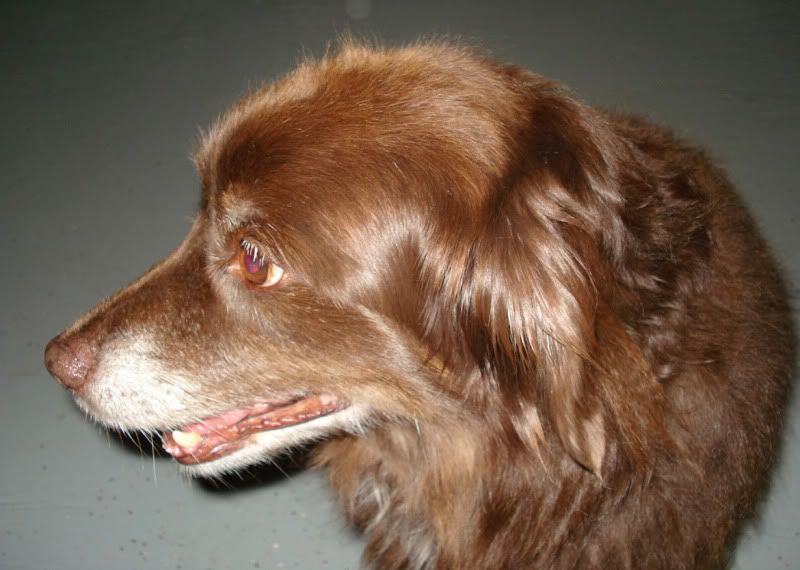I moderate several Facebook groups, in addition to my business page for Paws for Praise, one of which is dedicated to reactive dogs and the use of desensitization, counter-condtioning, and positive reinforcement to effect lasting changes in behavior for such dogs. The object is to keep the dog feeling safe, gradually convince the dog that the things that used to scare him are actually pretty cool (trainers call that a “positive conditioned emotional response), and add some obedience or impulse control behaviors once the dog is feeling better about the trigger stimuli.
Interestingly, despite a very long history of success of these humane, and well researched, methods, there are trainers who espouse other methods, some of which are not so pleasant from the dog’s perspective. Sometimes, it’s hard for students of such trainers to switch gears and try something like the CARE protocol.
Every once in a while, though, someone jumps ship and crosses over to a new way of training – I like to call it an epiphany. This is just one of their stories, which was posted this morning, and which I’m proud to have received permission to share in its entirety. From Reactive Dogs Facebook group member, Nichola Luna:
 (Old woman/young woman optical illusion)
(Old woman/young woman optical illusion)
“This post is going to sound like an Oscar acceptance speech and it kind of is because I feel like I have won something very special – a change of perspective. So before I start crying I want to say thank you to all of you for sharing your experiences and being supportive, thank you for being tolerant of my noob questions / comments, thank you to Anne Springer for running this group and most of all thank you to whoever it was who posted ‘DON’T BE STINGY WITH YOUR TREATS’.
What I’m going to say is going to sound so stupid and obvious to those of you who already understand but please remember this next time you meet / read a post from someone who says R+ only won’t work. As someone who has been brought up on old school ‘yank and crank’, being told R+ only can work is rather like seeing the picture of the old woman and being told that it is a picture of a young lady. Once you have one perspective, it is really, really, REALLY hard to see the other. For me, treats were always seen as a reward for obedience but now I understand that actually they are there to make my dog happy. It sounds so stupid yet it has completely transformed me and my dog which I will tell you all about as soon as I have finished glorying in my ‘penny drop’ moment.
Basically I have been working on faith here up until now. My dogs are livestock guardian dogs and some people will tell you that they can’t be trained to be obedient. My old girl was trained ‘old school’ and is a very good girl and I understand why – she has been conditioned to avoid an aversive (leash check) by responding to a verbal cue. Of course she was encouraged with rewards of games/praise/treats but I didn’t see how you could remove the aversive and still get obedience as this type of training is prone to extinction anyway as soon as you reduce the aversive even. You have to re condition periodically. If you just have rewards then the dog is simply choosing whether it wants the reward you are offering or the reward it has found for itself. This is why old school trainers say ‘bribery’ can’t work alone. There is nothing weighing in the trainers favour, the dog has 100% chance of reward whether it is obedient or not. And they are absolutely right ( if you only reward your dog for obedience, it’s too little too late. )Conclusion: these R+ only people, are clearly a bunch of mad hippies, who only own golden retrievers that love liver cake more than anything else in the world, which is why it works for them and not on real dogs like mine…
I decided to give it a try anyway. I never liked the puzzled / upset look I got from my dog when she got it ‘wrong’ and hit the end of the lead, even though I tried to make up for it with games and praise and treats. I also suspect the unnatural, sudden turns may have attributed to the wear and tear on her cruciate ligaments. So I decided that my new one was going to be an experiment in R+ only and to be perfectly honest, it’s been slow going. I thought mainly because I’m human and didn’t train often enough because I was tired from work or busy or whatever. There has been more than one occasion when I have thought ‘I can see why people stick to old school methods – it’s much quicker/more effective’. Now I realise that this was because I was being stingy with my treats! I was doing R+ only, but old school style. I still had old school mentality to treats; that they were there for shaping, luring and rewarding for obedience.
Luckily someone posted the advice ‘don’t be stingy with your treats’ and along with the other comments I had read, stuff about ‘look at me’, clicker training and picking up on when others treat their dogs, I decided to change tack and feed for everything good, no matter how small or inadvertent, with a cue word attached. ‘Well duh!’ I can hear you all say it and now it seems so obvious but mentally, it was a total paradigm shift for me to reward behaviour rather than obedience. Feed my dog just to make her happy? Yes. Without her having actually ‘obeyed’ anything necessarily? Yes. Weird… …but OK I’m getting desperate now, let’s try it. Result? Exponential explosion in desired behaviours, better recalls than I ever had from ‘yank and crank’ training methods, beautiful lead walking and me repeatedly smacking myself upside the head for being a doofus for so long, and all in a matter of weeks.
These however, have been my ‘jack pot’ instances this week that made me really want to say thank you to everyone who has helped me to understand how to train my dog and see the young lady instead of the old crone.
First was when she spotted a horse in the next field, previously this would have sent her into a frenzy. Instead she stood calmly looking at it, looked at me, looked back at the horse and before I could open my mouth she turned around and started trotting back to me to collect her ‘prize’ for seeing a big four legs. A previous trigger, is now acting as a cue to recall.
Off lead, (my bad as we had seen ‘The’ cows and said hi and bye to them so assumed it was OK to let her off to chase the bunnies up the far end it’s a huge field, the cows were long out of sight by this point), was just thinking she was getting a bit wired and was time to put her back on the lead when she stopped dead, facing into the field. I came over the rise to see there was a new, second herd of cows in the field and my dog was twice as close to them than to me. Anyone with a reactive dog will know this is nightmare scenario #1. She was tense, my first attempt to call her came out a strangled squeak and was probably blown away in the wind. She started to walk / stalk towards the cows. I was having visions of stampedes, broken legs and a shot dog. I called ‘wait’ and she stopped, still staring at the cows. I called her to me, and blow me if she didn’t instantly turn her back on the cows and come galloping back to me! I fed her sooo many treats. My hands were shaking so much I could hardly get her lead back on. I just sat in the wet grass and gave her a chest rub and more treats.
Before then, I don’t think I believed, in my heart of hearts, that I could actually, genuinely, really, truly, CC a response without aversive measures. In that awful, heart stopping moment, my spoilt little ‘R+ only’ brat, proved to me that I can.”
Imagine a dog and her owner taking a walk, minding their own business. Suddenly, an off leash dog is headed straight for them. If they can even see the dog’s owner, requests to have the owner recall the advancing dog are often met with that most awful of phrases, “Don’t worry, he’s friendly.” Sometimes, the owner does try to recall the dog, often without success, and almost certainly with no thought whatsoever that the leashed dog may not be.











